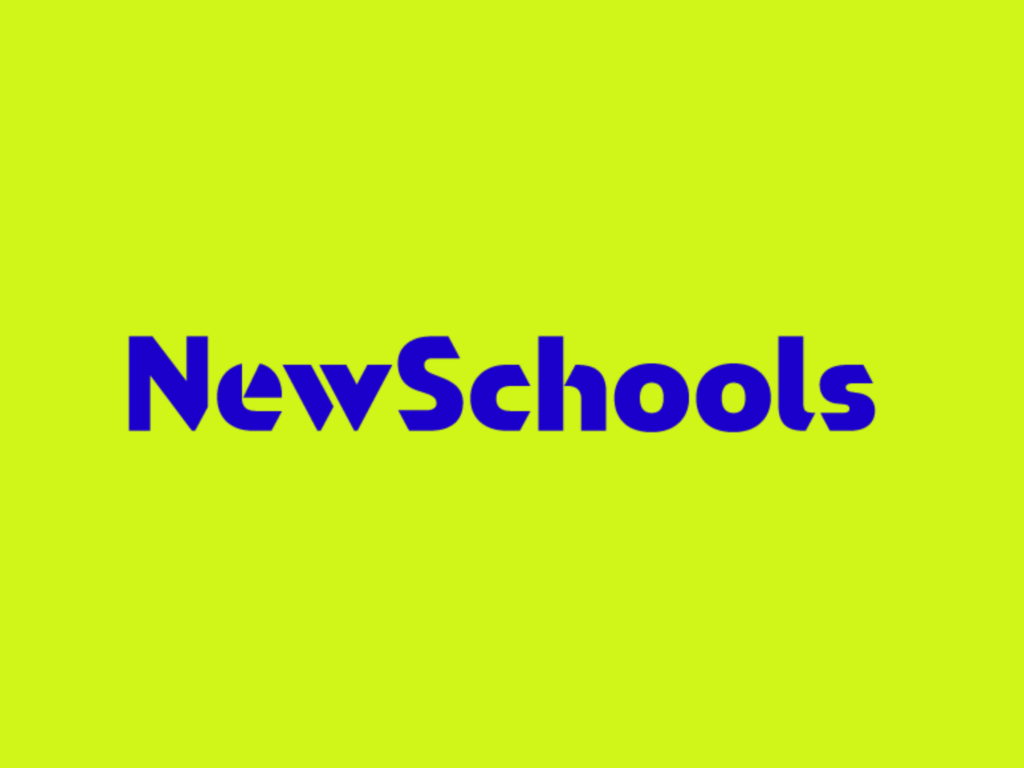This blog was also cross-posted on Medium.
 NewSchools CEO Stacey Childress kicked off the Summit 2018 lunch plenary by recognizing everyone who has contributed to NewSchools’ 20 years of investing in education. She highlighted founders, previous leaders, board members and alumni, and specifically called out co-founder Kim Smith and previous CEO Ted Mitchell. Stacey also recognized our current and former ventures in the room, who are at the core of our work. Then, she turned it over to two inspiring students – 8-year-old Samiah Turner and 10-year-old Phoenix Gray – who attend Phalen Leadership Academy, part of the NewSchools family, in Indiana.
NewSchools CEO Stacey Childress kicked off the Summit 2018 lunch plenary by recognizing everyone who has contributed to NewSchools’ 20 years of investing in education. She highlighted founders, previous leaders, board members and alumni, and specifically called out co-founder Kim Smith and previous CEO Ted Mitchell. Stacey also recognized our current and former ventures in the room, who are at the core of our work. Then, she turned it over to two inspiring students – 8-year-old Samiah Turner and 10-year-old Phoenix Gray – who attend Phalen Leadership Academy, part of the NewSchools family, in Indiana.
Samiah and Phoenix shared what they’re learning about science and technology as participants in the STEMNASIUM Learning Academy at Phalen, and how they’re not waiting to put their knowledge to use. As Samiah told the room of 1200+ educators, “Grown-ups often ask what we want to be when we grow up. But we don’t have to wait to grow up, we’re already investors.”
Earlier this year, these inspiring third and fifth grade students were the only elementary students at a state-wide science competition where they showcased their designs of remote operative vehicles (ROVs) that were made to operate underwater. They explained the process to connect the control boxes to the motors, and to waterproof the wiring. They even designed their ROVs to look like different types of fish. Beyond the STEM knowledge they gained through STEMNASIUM, they’re also learning about teamwork, collaboration and patience, and getting ideas for what they want to focus on in their careers.
Phoenix told us she wants to be an architectural and electrical engineer. Her brother wants to be a doctor, and she plans to use her engineering skills “to build him the best hospital,” and also wants to focus on improving prosthetics. Samiah’s favorite part of STEMNASIUM is being able to find a problem and build something to fix it. Or, as she calls it, design thinking and prototyping. Next on her list of inventions is building a hologram screen for iPhones so the screens don’t crack. Samiah finished out their talk with wise advice to everyone in the room: “Show kids how to discover their STEM super powers. And tell them you believe in them so they believe in themselves even more.”
Then, we transitioned into TED-style talks from three leading technologists: Dr. Vivienne Ming from Socos Labs, Jeremy Bailenson from Stanford University’s Virtual Human Interaction Lab, and Chad Jenkins from the University of Michigan. They discussed the technological breakthroughs that are already affecting our lives, the sweeping changes we can expect to see in the next 20 years, and how we can support students to thrive in that future.
Vivienne is guided by one central question: “How do we make better people – people who can go out and construct their own purpose?” She is a self-proclaimed mad scientist who is using AI for good – from building AI to treat her son’s diabetes to creating the fancy face recognition used on the latest iPhone, her work is transforming the world around us. She sees endless opportunities for technology to improve our quality of life, but is more concerned with how technology can make us better people.
The next TED-style talk came from Jeremy Bailenson, who started by posing the question, “VR is cool, but what’s the point?” Jeremy has a long history in designing VR for social good, and he laid out many exciting ways VR can be used beyond the wow factor. He cautioned the audience that “VR is not for everything – save it for something special.” And he had a lot of examples of special VR uses we all can benefit from, including providing diversity training, teaching empathy, informing policy, promoting environmental conservation, and learning what it’s like to live as a member of a different race or as someone with a visual impairment.
The final technologist to speak was Chad Jenkins, a roboticist and computer scientist who designs autonomous robots. This technology is used in autonomous cars, but Chad thinks robots have much more to offer us. Think improving healthcare, infrastructure and education, allowing space exploration and reimagining agriculture and the food supply chain. But even more important than robots’ technical abilities, Chad wants to know, “who will define this robotic future?” He finished his talk by calling on technologists to work harder to diversify the tech workforce by working with schools and understand how to reach diverse populations, and partner with K-12 schools to create this diverse workforce.
Heather Hiles, CEO of Imminent Equity, then moderated a panel with Vivienne, Jeremy and Chad on how we can prepare the next generation of craftspeople. The panelists emphasized the need to building a society of creative, adaptive problem solvers. After all, technology is a tool we are all going to need to adapt to, and as Vivienne told us, “Tools without a craftsman are pointless.”


